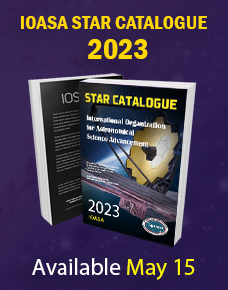The 2014 Gruber Foundation Cosmology Prize recognises Jaan Einasto, Kenneth Freeman, R. Brent Tully, and Sidney van den Bergh for their individual roles in the development of Near Field Cosmology — laying the foundation in our understanding of the structure and composition of the nearby Universe.
The Cosmology Prize honours a leading cosmologist, astronomer, astrophysicist or scientific philosopher for theoretical, analytical, conceptual or observational discoveries leading to fundamental advances in our understanding of the Universe. This year’s prize will be presented to Einasto, Freeman, Tully, and van den Bergh in a ceremony at Yale University on 1 October, 2014.
"Their decades-long observations and analyses of relatively local galaxies have allowed cosmologists — including themselves — to investigate the evolution of the Universe on the largest scales," said Wendy Freedman, Chair of the Selection Advisory Board to the Prize.
Their award-winning work on the nearby Universe quietly emerged during a period when cutting-edge cosmology was focused instead on the farthest reaches of the Universe. As recently as the 1920s, astronomers were unsure whether anything existed beyond the realm of stars we call the Milky Way galaxy, but then came two key discoveries.
The first, by Ernst Öpik (1922) and Edwin Hubble (1925), is that other galaxies do indeed exist — and today we know they number well over 100 billion. The second, by Hubble (1929), is that those galaxies are, on the whole, moving away from one another — according to general relativity, carried along by the expansion of space itself. Because light from an object takes time to reach us, astronomers realised they might be able to trace the evolution of the Universe by looking into the distant past — by examining the infant Universe and, epoch by epoch, working their way forward.
This year’s Gruber recipients, however, stayed closer to home — and the present. Their work has allowed cosmologists to examine the mature Universe and work their way backwards. Operating independently of one another, the four astronomers studied our Milky Way galaxy, the galaxies in the Local Group, and other nearby objects, devising strategies and making discoveries that have led to two fundamental changes in our interpretation of the Universe:
On the largest scales, the Universe resembles a web of neurons — vast filaments of galaxies and superclusters of galaxies separated by even vaster voids.
This structure would not be possible if the Universe didn’t have an invisible gravitational component — what we now call dark matter.
The work begun by Einasto, Freeman, Tully, and van den Bergh is sometimes called Near Field Cosmology, a seemingly paradoxical name that nonetheless encapsulates their collective vision: To study the Universe on the largest scale, think small.
In addition to the cash award, each recipient will receive a gold laureate pin and a citation that reads: The Gruber Foundation proudly presents the 2014 Cosmology Prize to Jaan Einasto, Kenneth Freeman, Brent Tully and Sidney van den Bergh for their pioneering contributions to the understanding of the structure and composition of the nearby Universe. Their work laid the foundations of Near Field Cosmology. They clarified the properties of nearby galaxies — dwarfs, spirals, lenticulars and ellipticals — through studies of their morphology, stellar and gaseous content. The early recognition of the role of dark matter, and of the filamentary clustering of galaxies together with setting the distance scale of galaxies was crucial in setting the cosmological context for our current understanding of the evolution of galaxies and large-scale structure.
Winners of 2014 Gruber Foundation Cosmology Prize Announced
June 10, 2014

2014 IOASA Star Catalogue Released
Feb. 12, 2014

2014
This year we are back with our annual IOASA Star Catalogue and we are glad to inform you that 1927 records are already written in and there are more to go. For now we are moving our operations to Ethiopia where a new educational campaign sponsored by government was launched. More than 20 events are planned and a new observatory will be built in the vicinity of the capital.
Our goal is to make astronomical sciences available to anyone in the world and we hope for your support to make it happen.
Thank you!
Xavier Cortés
IOASA Head of Operations






